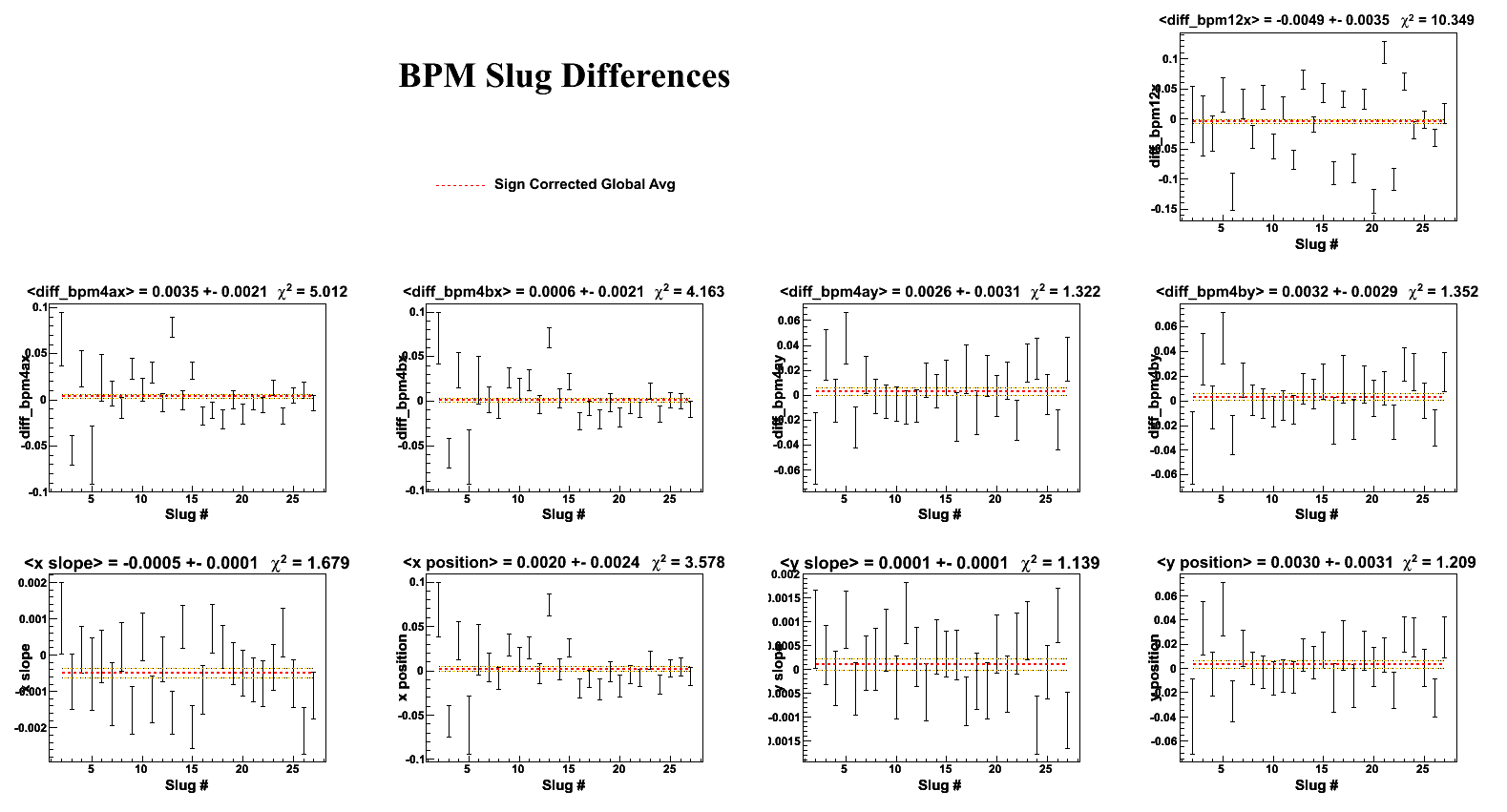Make New Entry, Make Followup Entry
User name paschke
Log entry time 14:41:10 on October 26, 2009
Entry number 296702
keyword=position differences for HAPPEX-IThese are plots (from Luis) of the position differences averaged over "slug" (a single waveplate state, and approx. 1 days worth of data). The vertical axis is in micrometers. Each point is "sign-corrected" to correlate to helicity (that is, this is the correct average which shows the effect of HCBA on the combined data sample.) The error bars are the beam jitter RMS / sqrt(N), so they represent the range of convergence due to beam jitter and change during the run corresponding to changes in the optics. The upper right is the 12x bpm, the 2nd row are the 4a/4b bpms, and the bottom row reinterprets the 4a/4b bpm data as position/slope on target (with units of either micron or microradian as appropriate).
The relevant features, as I see it:
- There is no specific hypothesis for how the "energy" (bpm12x) differences are generated. (The dispersion is approximately 4 meters, so 0.1 micron ~ 25 ppb, and 0.005 micron ~ 1 ppb.) Early in the run, we ascribed the observed 12x differences to an effect of beam interception in the injector. We were pleased to see that these differences settle down in slug 24, right after this interception was reduced in the Oct 15 injector work.
By comparison, in HAPPEX-II these differences were consistently smaller and more stable, typically <20nm per slug (after the electronics pick-up problem was fixed).
- Similarly, the large 4a/4b differences were also thought to be sensitive to beam conditions in the injector. The big change there (slug 7) may have been associated with injector work around that time (Sept 15).
- The largest component of these differences are flipping sign with slug number... this means they are associated with Pockels cell voltage and not with the beam helicity itself. The so- called "steering" effect from the Pockels cell behaves like that. So does electronics pickup. Our Pockels-cell-off runs saw no non-zero position differences in the injector, but I suppose that doesn't rule out electronics pickup in the beam longitudinal structure which could translate to an energy difference.
- To summarize for HAPPEX-3: there were some worrying trends early on, but these settled down early on. Overall, the performance was sufficient (and consistent with requirements). I also believe that this level of performance will be sufficient for the PVDIS experiment.
- There was a hope of characterizing the source during this run, in preparation for PREX. Unfortunately, effects of beam interception in the injector dominate, which limits what we can learn. One lesson which we draw from this is that we cannot expect to succeed in PREX if we have similar problems in the injector.
Position differences for HAPPEX-I run
